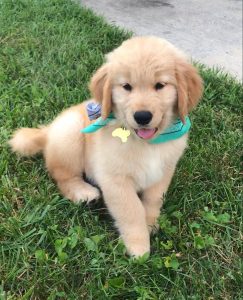Training a dog for hunting is a rewarding experience that can enhance your hunting trips and strengthen the bond between you and your canine companion. This guide will walk you through the essential steps to train your dog for hunting, ensuring they are well-prepared for the field.
H1: Understanding Hunting Dog Training
What is a Hunting Dog?
A hunting dog is trained to assist in locating and retrieving game. Different breeds excel in various types of hunting, such as bird hunting, waterfowl retrieval, and tracking larger game.
Traits of a Good Hunting Dog
- Strong Drive: High energy and a strong desire to work.
- Obedience: Ability to follow commands reliably.
- Nose and Tracking Ability: Exceptional scent detection and tracking capabilities.
- Retrieving Instinct: Natural ability to retrieve game.
H1: Preparing Your Dog for Hunting Training
Step 1: Basic Obedience Training
Before starting hunting-specific training, your dog must master basic obedience commands. This foundation is crucial for more advanced training.
- Sit, Stay, Come, Heel: Your dog should respond reliably to these commands.
- Recall: Your dog must come to you immediately when called, even in distracting environments.
Step 2: Physical Conditioning
Hunting can be physically demanding. Your dog needs to be in excellent physical condition.
- Regular Exercise: Daily exercise to build stamina and strength.
- Swimming: If you plan to hunt waterfowl, swimming is an essential skill.
H1: Introducing Your Dog to Hunting
Step 3: Familiarization with Gunfire
- Start Slow: Introduce your dog to gunfire gradually to avoid fear.
- Use a Starter Pistol: Start with a lower-caliber pistol from a distance, and gradually decrease the distance.
- Positive Association: Pair the sound of gunfire with positive experiences, like treats or play.
Step 4: Scent Training
- Introduce Game Scents: Use training scents or actual game to familiarize your dog with the smell.
- Tracking Drills: Create trails with the scent and encourage your dog to follow them, rewarding successful tracking.
H1: Advanced Hunting Training
Step 5: Retrieving Training
- Basic Retrieval: Start with basic fetch games using a dummy or toy.
- Field Retrieval: Gradually introduce your dog to retrieving in different terrains, including water.
- Marking: Teach your dog to mark the fall of game and remember multiple falls.
Step 6: Blind Retrieves
- Directional Commands: Teach your dog to follow hand signals or whistle commands to locate downed game they didn’t see fall.
- Practice: Set up blind retrieves in varied environments to build your dog’s skills.
H1: Specialty Hunting Training
Step 7: Bird Hunting
- Pointing: For pointing breeds, train your dog to freeze and point when they locate game.
- Flushing: For flushing breeds, teach your dog to flush game from cover on command.
Step 8: Waterfowl Hunting
- Water Retrieves: Ensure your dog is comfortable swimming and retrieving from water.
- Decoy Training: Familiarize your dog with decoys and teach them to ignore them and focus on real birds.
Step 9: Blood Tracking
- Introduce Blood Scent: Use diluted blood to create a trail for your dog to follow.
- Practice Trails: Gradually increase the length and complexity of the trails to enhance your dog’s tracking ability.
H1: Maintaining Hunting Skills
Step 10: Regular Practice
- Frequent Training: Regularly practice hunting drills to keep your dog’s skills sharp.
- Hunt Simulations: Simulate hunting scenarios to keep your dog accustomed to real hunting conditions.
Step 11: Health and Safety
- Vet Check-Ups: Ensure your dog is in good health and up-to-date on vaccinations.
- Hydration and Nutrition: Provide proper hydration and nutrition, especially during hunting trips.
H1: Conclusion
Training a dog for hunting is a significant commitment that requires time, patience, and dedication. By following these steps and continuously working on your dog’s skills, you can prepare them to be an effective and reliable hunting partner.
FAQs
- How long does it take to train a dog for hunting?
- Training duration varies depending on the dog’s breed, previous training, and the specific hunting requirements. It can take several months to a year to fully train a hunting dog.
- What breeds are best suited for hunting?
- Breeds such as Labrador Retrievers, German Shorthaired Pointers, Beagles, and Spaniels are often chosen for their hunting instincts and abilities.
- Can older dogs be trained for hunting?
- Yes, older dogs can be trained for hunting, though it may take more time and patience compared to training a younger dog.
- What if my dog is afraid of gunfire?
- Gradually acclimate your dog to gunfire sounds, starting with softer sounds and slowly increasing the volume while pairing the noise with positive experiences.
- Do hunting dogs need special equipment?
- Yes, hunting dogs often require equipment such as vests, leashes, whistles, and sometimes GPS collars, depending on the type of hunting and the environment.


